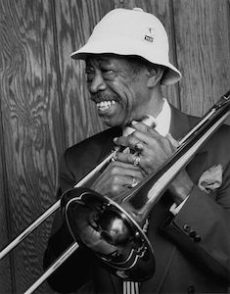
Three Wishes
The Baroness approached Al Grey and presented him with the question of three wishes and he replied to her:
- “To have happiness.”
- “Knowledge.”
- “Understanding. I have no more to say.”
More Posts: baroness,history,instrumental,jazz,music,pannonica,three,trombone,wishes
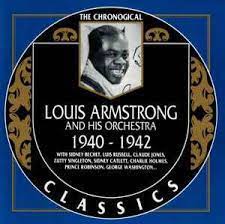
Daily Dose Of Jazz…
George Washington was born October 18, 1907 in Brunswick, Georgia and raised in Jacksonville, Florida. He began playing trombone at age ten and attended Edward Waters College in the early-1920s.
Washington relocated to Philadelphia in 1925 and played with J.W. Pepper before moving to New York City shortly thereafter. In New York, he studied under Walter Damrosch at the New York Conservatory, playing with various ensembles in the late 1920s.
In 1931, he began playing with Don Redman, and gigged with Benny Carter in 1932 and Spike Hughes in 1933. In the mid-1930s, he played and arranged for the Mills Blue Rhythm Band and worked with Red Allen and Fletcher Henderson. From 1937 to 1943, he played in Louis Armstrong’s orchestra. After his tenure with Armstrong he moved to the West Coast, and played with Horace Henderson, Carter again, and Count Basie.
From 1947 he led his own ensemble, playing in California and the Las Vegas Strip in Nevada. He and drummer Johnny Otis collaborated often, and in 1960 Washington worked with Joe Darensbourg. He did freelance work as a player and arranger later in his life. To date there is no record of his death
More Posts: bandleader,history,instrumental,jazz,music,trombone
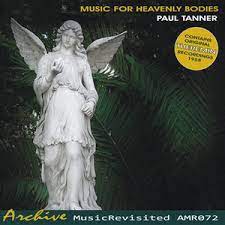
Daily Dose Of Jazz…
Paul Tanner was born on October 15, 1917 in Skunk Hollow, Campbell County, Kentucky. One of six brothers, each could play an instrument and he learned to play the trombone at a reform school where his father was employed as superintendent. The brothers were playing in what he described as a strip joint when Glenn Miller heard him and offered him a position in his band.
He gained fame as a trombonist, playing with Glenn Miller and His Orchestra from 1938 to 1942, the group’s entire duration. When it disbanded, Paul joined the U.S. Army Air Force, becoming a part of the 378th Army Service Forces Band at Ft Slocum, New York. He later worked as a studio musician in Hollywood.
Tanner earned bachelor, master and doctorate degrees at the University of California, Los Angeles between 1958 and 1975. He was influential in launching UCLA’s highly regarded jazz education program in 1958. He became a professor at UCLA and authored or co-authored several academic and popular histories related to jazz.
He developed and played the Electro-Theremin, an electronic musical instrument that mimics the sound of the theremin. He can be heard performing on the opening title theme music of My Favorite Martian, on several 1966-1967 Beach Boys recordings, Good Vibrations, Wild Honey, I Just Wasn’t Made For These Times, and Tune L.
Trombonist, educator and inventor Paul Tanner transitioned from pneumonia on February 5, 2013 at the age of 95. Of all the members of the Glenn Miller Orchestra, only trumpeter Ray Anthony is still living.
More Posts: educator,history,instrumental,inventer,jazz,music,trombone
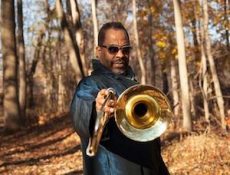
CLIFTON ANDERSON QUINTET
Clifton Anderson is considered one of the leading trombonists and composers performing in Jazz today. His performances embody the fertile and varied history of musical experiences he’s enjoyed working with a who’s-who of musical giants, from Sonny Rollins, McCoy Tyner, Dizzy Gillespie, Slide Hampton, Lester Bowie, Frank Foster, Charlie Haden and Dee Dee Bridgewater to Stevie Wonder, Keith Richards, Paul Simon, The Mighty Sparrow and Merv Griffin among others. He is not only noted for his rich personal sound on the horn but for his abilities as a composer and musical interpreter. His identifiable sound and memorable compositions have drawn an ever-expanding audience to his recordings and performances.
Clifton Anderson ~ Trombone
Antoine Roney ~ Saxophone
Edsel Gomez~ Piano
Belden Bullock ~ Bass
Steve Johns ~ Drums
More Posts: adventure,album,club,festival,genius,jazz,museum,music,preserving,restaurant,travel,trombone
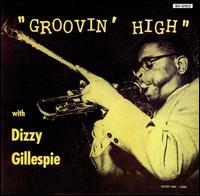
Daily Dose Of Jazz…
Alton “Slim” Moore was born October 7, 1908 in Selma, Alabama and began on baritone horn before settling on trombone by age 17. He played with local bandleaders and territory bands in his youth, such as Georgia Barlowe, Eddie Lemon, Gonzelle White, and Gene Coy.
Moving to New York City early in the Thirties he played with Jack Butler, Charlie Skeete, and Bobby Neal. Frequently switching ensembles in New York, in 1938 he did a short tour of Cuba with the Leon Gross Orchestra. Toward the end of the decade Moore moved up to play in more high-profile bands such as those of Fats Waller, Coleman Hawkins, Hot Lips Page, and Charlie Johnson. In the 1940s he played with Ella Fitzgerald, Benny Carter, Dizzy Gillespie and Louis Armstrong.
By the 1950s Slim had reduced his outings to part-time playing, after an extended stay in the band of Stafford “Pazuza” Simon. He would go on to play with Fletcher Henderson in 1957, and in the 1960s played in the Prince Hall Symphonic Band in New York as well as other big band revival outfits.
Trombonist Slim Moore, who also played and recorded on euphonium and did some scat singing, transitioned in 1978 in New York City.
More Posts: euphonium,history,instrumental,jazz,music,trombone



